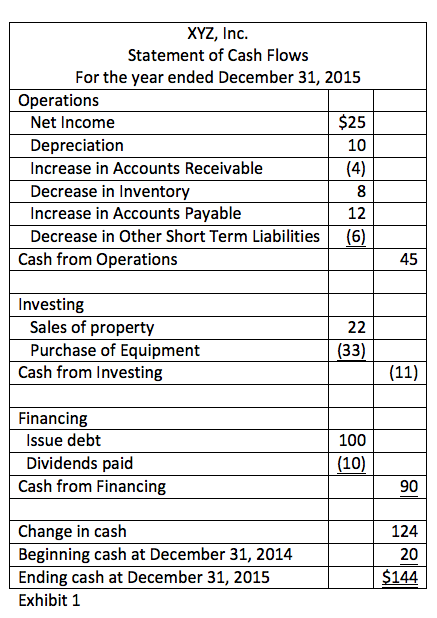Columbia Sportswear Company Quarterly report pursuant to Section 13 or 15d

Companies generally aim for a positive cash flow for their business operations without which the company may have to borrow money to keep the business going. A cash flow statement tracks the inflow and outflow of cash, providing insights into a company’s financial health and operational efficiency. The term cash flow generally refers to a company’s ability to collect and maintain adequate amounts of cash to pay its upcoming bills. In other words, a company with good cash flow can collect enough cash to pay for its operations and fund its debt service without making late payments. Therefore, it should always be used in unison with the income statement and balance sheet to get a complete financial overview of the company. Using this method, cash flow is calculated through modifying the net income by adding or subtracting differences that result from non-cash transactions.
How Do the Four Basic Financial Statements Work Together?
When your cash flow statement shows a negative number at the bottom, that means you lost cash during the accounting period—you have negative cash flow. It’s important to remember that long-term, negative cash flow isn’t always a bad thing. For example, early stage businesses need to track their burn rate as they try to become profitable. What it doesn’t show is revenue or expenses, or any of the business’s other cash activities that impact your company’s day-to-day health. Issuance of equity is an additional source of cash, so it’s a cash inflow.
- A balance sheet shows you your business’s assets, liabilities, and owner’s equity at a specific moment in time—typically at the end of a quarter or a year.
- Since cash flows are vital to a company’s financial health, the statement of cash flows provides useful information to management, investors, creditors, and other interested parties.
- Operating activity cash flows include transactions, adjustments, and changes in value not defined as investing or financing activities.
- The operations section on the cash flow statement begins with recording net earnings, which are obtained from the net income field on the company’s income statement.
What is the approximate value of your cash savings and other investments?
Having negative cash flow means your cash outflow is higher than your cash inflow during a period, but it doesn’t necessarily mean profit is lost. Instead, negative cash flow may be caused by expenditure and income mismatch, which should be addressed as soon as possible. Positive cash flow indicates that a company has more money flowing into the business than out of it over a specified period.
Analyst Certification FMVA® Program

Using the same comparative balance sheet information as in the previous example, note that the information to its right in item d. In the full statement, we can see that Clear Lake has net cash flow of $20,000. The beginning cash balance was $90,000, making the ending cash balance $110,000 (see Figure 5.19).
Cash Flow Statement vs Income Statement vs Balance Sheet
Here’s an example of a cash flow statement generated by a fictional company, which shows the kind of information typically included and how it’s organized. Remember the four rules for converting information from an income statement to a cash flow statement? With the indirect method, you look at the transactions recorded on your income statement, then reverse some of them in order to see your working capital. You’re selectively backtracking your income statement in order to eliminate transactions that don’t show the movement of cash.
Business Insights
Harvard Business School Online’s Business Insights Blog provides the career insights you need to achieve your goals and gain confidence in your business skills. Get free guides, articles, tools and calculators to help you navigate the financial side of your business with ease. Upgrading to a paid membership gives you access to our extensive collection of plug-and-play Templates designed to power your performance—as well as CFI’s full course catalog and accredited Certification Programs.
Examine the role of strategic cash allocations and the influence of foreign currency translations on consolidated cash flow. Analyze trends in cash flow ratios to assess long-term solvency and resilience. Additionally, evaluate how sophisticated cash flow metrics inform corporate governance decisions, performance benchmarking, and the company’s positioning within its industry. The direct method converts the income statement from the accrual basis to the cash basis.
Increase in Inventory is recorded as a $30,000 growth in inventory on the balance sheet. Since no cash actually left our hands, we’re adding that $20,000 back reporting stockholder equity to cash on hand. Using the cash flow statement example above, here’s a more detailed look at what each section does, and what it means for your business.

